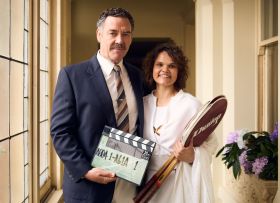If you’re adding music to video content you’ll need to understand what rights, or permissions, you have to clear before making it publicly available. Different types of music require different rights, and this is a very short summary to help you get started.
To put music with visuals you need to clear two sets of rights; a synchronisation, or ‘synch’ licence from the publisher of the music, representing the composer (i.e. the melody and words, regardless of who performs them) and a dubbing licence from the sound recording owner (usually the record company).
What different types of music are available to license?
A) Specially composed music: You can commission music for your production, you can write and record it yourself or if you know someone who writes you can ask them. Commissioning music can be expensive and there are no fixed rates so it’s a question of agreeing a fee. If you commission music you usually won’t need to clear any extra rights to use music in your film as this will be part of the agreement with the composer, and the composer will usually be responsible for clearing any other contributors’ inputs for you.
B) Commercial music: This term covers all kinds of commercially available music, from Adele to ZZ Top, or Pavarotti to Prokofiev. Generally speaking the better-known the performer and track, the more it will cost. There are no set fees for commercial music, and all rates are negotiable. To use commercial music you’ll usually need a synch licence from the composer’s publisher and a dubbing licence from the artist’s record company.
If the composer(s) died more than 70 years ago, then the musical work is no longer in copyright in Australia, and you won’t need a synch licence. In Australia, sound recording copyright lasts for 70 years after first release, so if it’s an old original recording you probably won’t need a dubbing licence. But it is always safer to check first!
C) Production music: Unlike commercial music, production music (also known as library music or stock music) generally won’t be well-known music, but is created with film and television in mind. The advantage of library music over commercial music is that one licence covers all synch and dubbing rights.
There are numerous library/production music companies in Australia. The majority of these companies licence their music through AMCOS while a few are independent and license their music direct.
Music can be licensed through AMCOS in units of 30 seconds. Rates vary according to use and rate cards with full details and a list of companies are available from AMCOS. A very small number of music libraries exist independently of AMCOS, with the advantage that they are able to set their own tariffs and can offer blanket licences covering all music in their library for world-wide multi-platform use in perpetuity. Audio Network is an independent music library in Australia and New Zealand.
To conclude: Copyright in music is protected by law, and it’s important to ensure that you don’t infringe anybody’s copyright. It’s impossible to cover all details in a short summary so if you’re in any doubt please check with the rights owners before assuming something is OK. Never assume ‘no-one will notice’. Every production has the potential to reach millions of viewers – particularly if it goes online. Always obtain independent legal advice if you’re in any doubt over your position. This information is intended as a guide only.
Helpful contacts:
Audio Network Australia – Independent Production Music Company
P| +61 2 8204 0100
E| [email protected]
W| www.audionetwork.com.au




